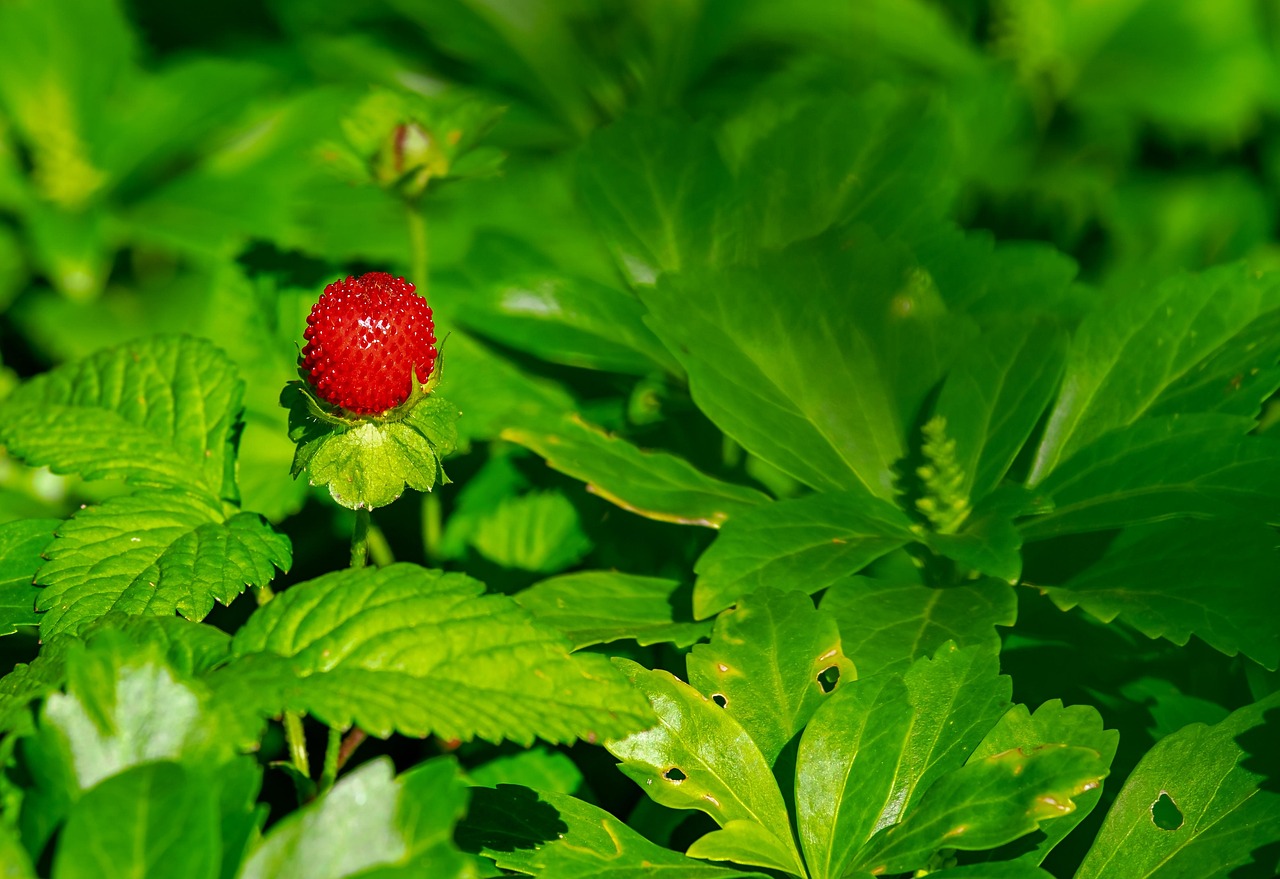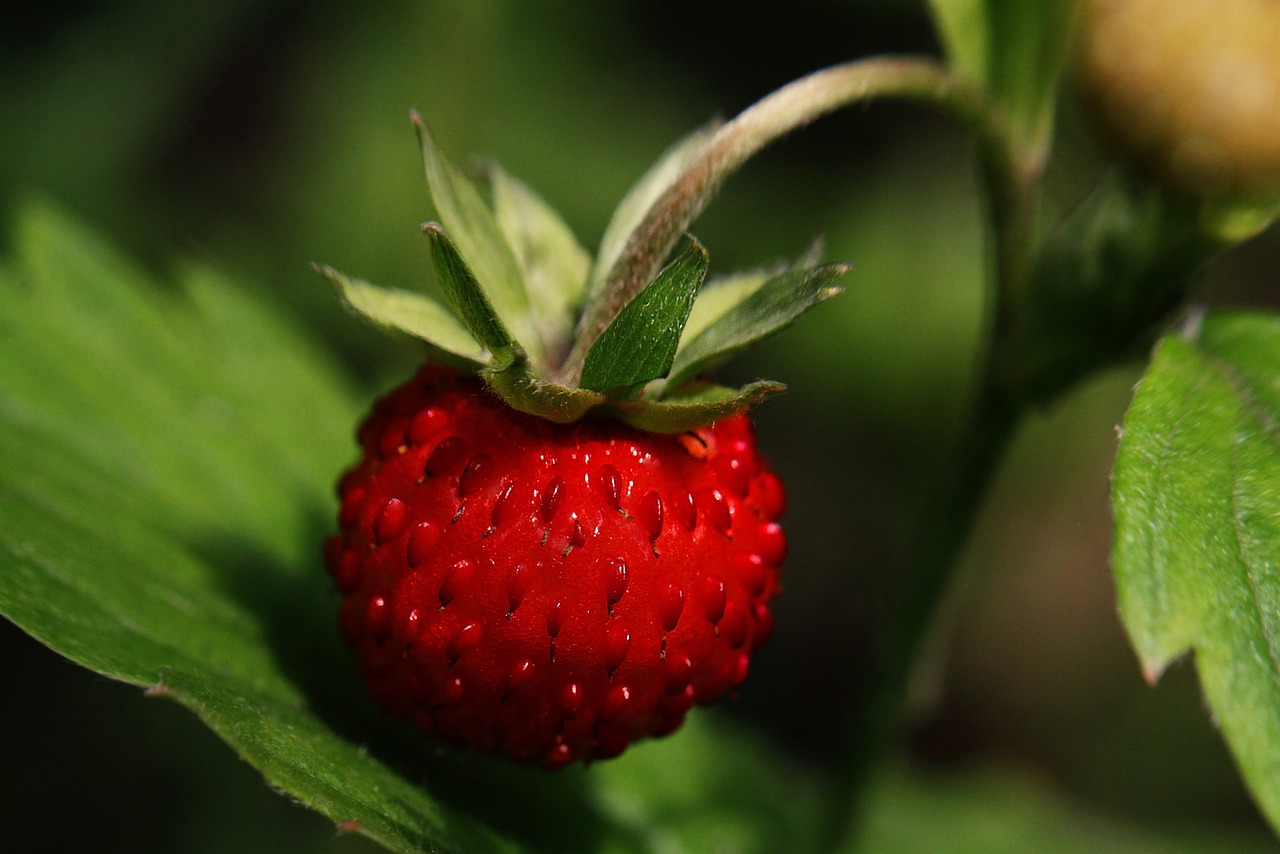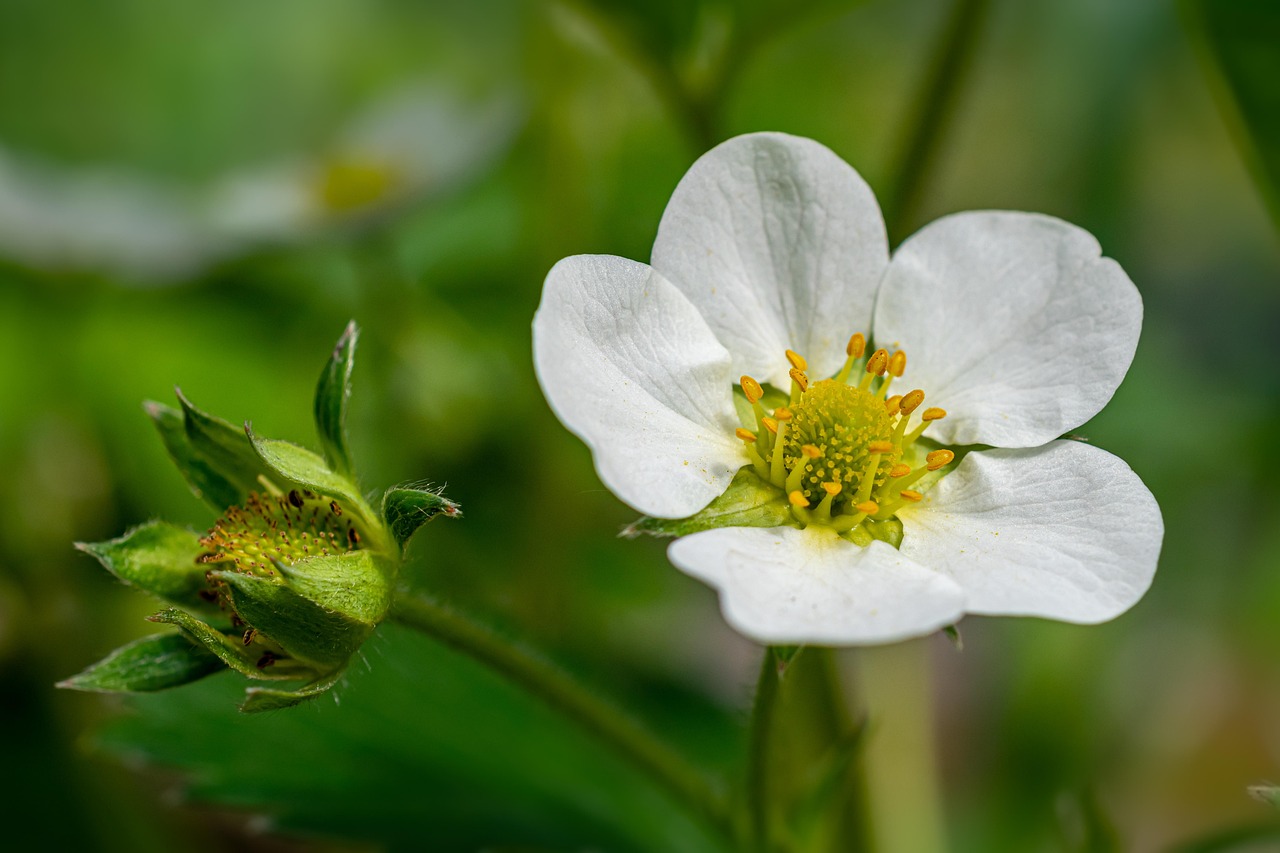Strawberry plant leaves turning yellow often indicates a condition known as chlorosis. This occurs when the plants are unable to produce enough chlorophyll, leading to yellowing leaves. Factors contributing to chlorosis include nutrient deficiencies, poor soil conditions, or water stress.
Chlorosis is a common issue faced by strawberry growers. Understanding its causes is essential for maintaining healthy plants and maximizing fruit yields. Strawberry plants are sensitive to their environment, and any disruption can lead to visible symptoms like yellowing leaves. This condition not only affects the aesthetic appeal of the plants but can also hinder their growth and fruit production.
Strawberries thrive in well-drained, nutrient-rich soils. When the leaves start to turn yellow, it can signal that the plants are struggling to absorb necessary nutrients. The most common nutrients involved in chlorosis include nitrogen, iron, and magnesium. A deficiency in any of these can lead to poor photosynthesis and ultimately affect the plant’s overall health.
In addition to nutrient deficiencies, environmental factors play a significant role in the health of strawberry plants. Soil pH, water quality, and even temperature fluctuations can impact nutrient availability. For instance, if the soil is too acidic or alkaline, it can hinder the plant’s ability to absorb essential minerals.
Common Causes of Yellowing Leaves

Several factors contribute to the yellowing of strawberry plant leaves. Below are some of the most common causes:
- Nutrient Deficiencies: Insufficient levels of nitrogen, iron, or magnesium can lead to chlorosis.
- Pests and Diseases: Infestations or infections can damage leaves and disrupt nutrient flow.
- Poor Soil Quality: Compacted or depleted soils may lack essential nutrients.
- Water Stress: Both overwatering and underwatering can cause stress on the plants.
- Soil pH Imbalance: An improper pH level can affect nutrient absorption.
Identifying the specific cause of chlorosis is crucial for effective treatment. For example, if a nutrient deficiency is suspected, conducting a soil test can provide valuable insight. This test will help determine which nutrients are lacking and allow for targeted amendments.
Pests such as aphids or spider mites can also lead to yellowing leaves. These insects feed on plant sap, weakening the plant and reducing its ability to photosynthesize effectively. Similarly, diseases like root rot or leaf spot can cause stress that manifests as yellowing foliage.
| Cause | Symptoms | Solutions |
|---|---|---|
| Nutrient Deficiency | Yellow leaves with green veins | Fertilize with appropriate nutrients |
| Pests | Wilting and curling leaves | Apply insecticidal soap or neem oil |
| Soil Issues | Poor growth and yellowing | Amend soil with organic matter |
Monitoring your strawberry plants closely will help in early detection of chlorosis. Regular inspections for signs of nutrient deficiencies, pests, or environmental stressors are essential for keeping your plants healthy. By understanding the causes and symptoms of yellowing leaves, growers can take proactive steps to ensure their strawberries thrive.
Identifying Nutrient Deficiencies
Understanding which nutrients are essential for strawberry plants is crucial for diagnosing chlorosis. Each nutrient plays a specific role in plant health, and deficiencies can lead to unwanted symptoms such as yellow leaves. Below are the primary nutrients needed by strawberry plants:
- Nitrogen: Vital for leaf growth and overall vigor. A deficiency often results in older leaves turning yellow while newer leaves remain green.
- Iron: Crucial for chlorophyll production. An iron deficiency typically causes the younger leaves to yellow while the veins remain green, a condition known as interveinal chlorosis.
- Magnesium: Important for photosynthesis and carbohydrate metabolism. Deficiency can lead to yellowing between the veins of older leaves.
- Calcium: Needed for cell wall development. Insufficient calcium may cause yellowing and blossom end rot in fruit.
Symptoms of Nutrient Deficiencies
Each nutrient deficiency presents unique symptoms that can help in identifying the specific issue. Recognizing these symptoms early can lead to timely interventions. The following table summarizes common deficiencies and their associated symptoms:
| Nutrient | Symptoms | Appearance of Leaves |
|---|---|---|
| Nitrogen | Older leaves yellowing | Light green to yellow |
| Iron | Yellowing of young leaves | Green veins with yellow tissue |
| Magnesium | Yellowing between veins | Older leaves show mottling |
Soil Testing for Accurate Diagnosis
A soil test is an effective way to diagnose nutrient deficiencies and pH imbalances in your strawberry plants. Conducting a soil test involves collecting samples from different areas of your garden and sending them to a lab for analysis. This process provides valuable information about nutrient levels and soil pH.
The steps to conduct a soil test are as follows:
- Gather Samples: Use a trowel to collect soil samples from multiple areas around your strawberry plants.
- Mix Samples: Combine the samples in a clean container to create a representative sample.
- Send for Testing: Submit the mixed sample to a soil testing laboratory.
- Review Results: Analyze the report to understand nutrient levels and pH balance.
This information will guide you on how to amend your soil correctly, ensuring your strawberry plants receive the necessary nutrients for healthy growth.

Correcting Nutrient Deficiencies
Once you identify the specific nutrient deficiency through observation and soil testing, you can take appropriate action to correct it. Here are some common amendments you might consider:
- Nitrogen Deficiency: Apply a nitrogen-rich fertilizer or organic options like composted manure or blood meal.
- Iron Deficiency: Use chelated iron supplements or iron sulfate, especially effective in alkaline soils.
- Magnesium Deficiency: Epsom salt (magnesium sulfate) can be dissolved in water and applied as a foliar spray or soil drench.
By addressing nutrient deficiencies promptly, you can help your strawberry plants recover from chlorosis and promote vigorous growth, leading to healthier fruit production.
Environmental Factors Affecting Strawberry Plants
In addition to nutrient deficiencies, environmental factors can significantly impact the health of strawberry plants. Understanding these factors is essential for preventing chlorosis and ensuring robust growth. Below are several key environmental conditions that can lead to yellowing leaves in strawberries.
Soil pH Levels
The pH level of the soil affects nutrient availability. Strawberry plants prefer a slightly acidic soil with a pH of 5.5 to 6.5. If the soil pH is too low (acidic) or too high (alkaline), it can hinder the plant’s ability to absorb vital nutrients.
- Acidic Soil: If the pH is below 5.5, certain nutrients such as calcium may become unavailable, leading to deficiencies.
- Alkaline Soil: A pH above 6.5 can limit the availability of iron and manganese, resulting in chlorosis, particularly in younger leaves.
To determine your soil’s pH, you can use a soil test kit available at garden centers or online. If necessary, you can amend the soil with lime to raise the pH or sulfur to lower it, thus optimizing nutrient availability for your strawberry plants.
Water Quality and Irrigation
Water quality also plays a crucial role in the health of strawberry plants. Contaminated or hard water can introduce salts and minerals that may affect the plants negatively.
- Hard Water: High levels of calcium and magnesium can lead to mineral buildup in the soil, potentially causing nutrient imbalances.
- Chlorinated Water: If municipal water supplies contain chlorine, it could harm beneficial soil microorganisms essential for nutrient uptake.
Using rainwater or filtered water for irrigation can help mitigate these issues. Additionally, ensure that your plants receive adequate water without overwatering, as both underwatering and overwatering can lead to stress and yellowing leaves.
Pest and Disease Management

Pests and diseases can severely impact strawberry plant health, causing yellowing leaves and other symptoms. Identifying and managing these threats is vital for maintaining plant vigor.
Common Pests
Several pests target strawberry plants, leading to nutrient deficiencies and chlorosis:
- Aphids: These small insects suck sap from leaves, leading to wilting and yellowing.
- Spider Mites: They thrive in hot, dry conditions and create stippling on leaves, which may eventually turn yellow.
- Thrips: These tiny pests can cause discoloration and distortion of flowers and leaves.
Regularly inspecting your plants for signs of infestation is crucial. Early detection allows for timely treatment using insecticidal soaps or organic options like neem oil to control pest populations.
Disease Risks
In addition to pests, various diseases can lead to yellowing leaves:
- Root Rot: Caused by overwatering or poor drainage, root rot leads to yellowing leaves and stunted growth.
- Powdery Mildew: This fungal disease appears as white powdery spots on leaves, which may yellow as the disease progresses.
Implementing good cultural practices such as crop rotation, proper spacing for air circulation, and avoiding overhead watering can help minimize disease risks. If diseases are detected, appropriate fungicides may be necessary for treatment.
Climate Considerations
The climate in which strawberry plants are grown can also influence their health. Factors such as temperature extremes and humidity levels are crucial for plant well-being.
- Temperature Extremes: Strawberries prefer moderate temperatures. Extreme heat can stress plants, leading to yellowing leaves and reduced fruit set.
- High Humidity: Excessive humidity can promote fungal diseases that damage leaves and inhibit healthy growth.
By understanding and managing these environmental factors, gardeners can create optimal growing conditions for their strawberry plants, reducing the likelihood of chlorosis and promoting healthier yields.
Best Practices for Strawberry Plant Care

To ensure healthy strawberry plants and minimize the risk of chlorosis, implementing best practices is essential. These practices encompass a variety of aspects, from planting techniques to ongoing care. Below are some recommended approaches that can help maintain vibrant and productive strawberry plants.
Choosing the Right Variety
Selecting the appropriate strawberry variety for your local climate and soil conditions is crucial. Some varieties are more resistant to diseases and pests, while others may thrive better in certain environmental conditions. Consider the following:
- Hardiness Zones: Choose varieties suited for your USDA hardiness zone to ensure they can withstand local temperature extremes.
- Pest and Disease Resistance: Look for cultivars that are bred for resistance to common issues like root rot and powdery mildew.
Proper Planting Techniques
How you plant your strawberries can significantly impact their health. Follow these guidelines for optimal planting:
- Soil Preparation: Amend the planting area with organic matter to improve drainage and nutrient content.
- Spacing: Ensure adequate spacing between plants (12-18 inches apart) to allow for air circulation, which helps prevent fungal diseases.
- Depth: Plant strawberry crowns at the correct depth, ensuring that the roots are covered but the crown remains above the soil line.
Regular Monitoring and Maintenance
Consistent monitoring of your strawberry plants is key to catching problems early. Regularly check for signs of nutrient deficiencies, pests, or diseases. Additionally, proper irrigation practices should be employed:
- Watering Schedule: Water deeply but infrequently to encourage deep root growth.
- Mulching: Apply organic mulch to retain moisture, suppress weeds, and regulate soil temperature.
Final Thoughts
Understanding the causes of chlorosis in strawberry plants is essential for maintaining their health and productivity. From nutrient deficiencies to environmental stressors, various factors contribute to the yellowing of leaves. By identifying these issues early and implementing effective solutions, strawberry growers can foster robust plants that produce bountiful fruit.
The importance of proper soil management cannot be overstated. Conducting regular soil tests will provide insights into nutrient levels and pH balance, enabling targeted amendments. Additionally, selecting disease-resistant varieties and practicing good cultural techniques will help mitigate risks associated with pests and environmental challenges.
As you cultivate your strawberry plants, remember that consistent care and attention are vital. Regular monitoring, timely interventions, and the adoption of best practices will ensure that your strawberries thrive. With these strategies in place, you can enjoy healthy plants and a fruitful harvest for many seasons to come.
